We contend that: The state of Canada has become one of the wealthiest countries in the world by using the land and resources. Canadian mining, logging, oil and fishing companies are the most powerful in the world due to land and resources. Some of the poorest First Nations communities have mines or other developments on their land but do not get a share of the profit. The taking of resources has left many lands and waters poisoned – the animals and plants are dying in many areas in Canada. We cannot live without the land and water. We have laws older than this colonial government about how to live with the land.
— Idlenomore.ca Manifesto
#IdleNoMore is a growing movement of indigenous activism that started with Canada’s First Nations taking a stand against a long history of systematic, institutionalized abuse by the Canadian authorities. #IdleNoMore began in part in response to a new suite of bills passed by the Canadian Senate (infamous Bill C-45) which contradict aboriginal treaty rights. The government’s failure to consult First Nations on the changes the bill makes to existing Treaty laws also renders the bill illegal under the Canadian constitution.
The primary objection to Bill C-45 is that it will allow First Nations’ reserve lands to be surrendered on the basis of a vote from a single meeting instead of the entire community. The bill also exempts companies from properly assessing the environmental impact of major pipeline and inter-provincial power line projects on First Nations water resources.
The complete set of bills aimed at further eroding First Nations’ sovereignty is as follows:
Bill C-27: First Nations Financial Transparency Act
Bill C-45: Jobs and Growth Act, 2012
Bill S-2: Family Homes on Reserves and Matrimonial Interests or Rights Act
Bill S-6: First Nations Elections Act
Bill S-8: Safe Drinking Water for First Nations
Bill C-428: Indian Act Amendment and Replacement Act
Bill S-207: An Act to amend the Interpretation Act (non derogation of aboriginal and treaty rights)
Bill S-212: First Nations Self-Government Recognition Bill
A Long History of Theft and Deceit
Canada’s wealth is based entirely on her many abundant natural resources. The legal basis for the State’s control of the land which house these resources are a series of treaties with First Nations. The treaties generally provide a number of guarantees from the Canadian government to the First Nations affected: reserve lands to live on, cash, allowance for hunting/fishing tools, farming assistance, schools on the reserves, a census, the right to fish and hunt on land not used for settlement, logging or mining, etc. In exchange, First Nations had to give up their rights to their traditional lands.
These treaties are criminally unfair, considering the amount of wealth that has been produced from the lands covered by the treaties. At the time of their signing however, many indigenous people had already been displaced from their homes and had their livelihoods disrupted by settler activities. They were facing starvation, never-ending conflict and even extinction if they refused to sign. Obtaining some legal protection was a necessarily choice for survival — especially considering the terrible fate of many First Nations in the USA.
Despite being such a swindle, these treaties have come to represent the only legal agreements conferring any special rights to First Nations and guaranteeing them some basic services from the Canadian government in return for all the loot. Unfortunately, the Crown hasn’t even managed to abide by the meager terms of its own treaties, and this new suite of bills will further undermine First Nations decision making power over their lands. However, having no treaty at all can be far worse for First Nations, as the case of the Lubicon Cree demonstrates.
The Lubicon Cree
Due to the remoteness of Lubicon Cree traditional territory, it was not included in Treaty 8 (covering much of Northern Alberta, and other areas) and therefore never formally forfeited to the Crown. Because there is no treaty governing the Lubicon Cree land claim, the Canadian government has been able to exploit the rich oil and gas deposits in the Lubicon territory without providing any compensation whatsoever to the Lubicon Cree. This means that the Lubicon Cree live in destitute conditions with high rates of cancer and respiratory illnesses from Tar Sands pollution with over 2600 oil and gas wells which have produced over $14 billion in revenue in their territory.
From Briar Patch Magazine:
On March 26, 1990, the United Nations Human Rights Committee ruled that Canada’s failure to recognize and protect Lubicon land rights violated the International Covenant on Civil and Political Rights. In 2006, the United Nations Human Rights Committee again called on Canada to address outstanding land claims in Lubicon territory before granting further licences for economic exploitation, yet this resource extraction is still happening.
The theft of resources takes place with or without a treaty though. Consider these statistics courtesy of the MediaCoop.ca’s IdleNoMore blog:
Overall numbers are difficult to pin down, but consider the following: Canadian governments received $9 billion in taxes and royalties in 2011 from mining companies, which is a tiny portion of overall mining profits; $3.8 billion came from exports of hydroelectricity alone in 2008, and 60 per cent of Canada’s electricity comes from hydroelectric dams; one estimate has tar sands extraction bringing in $1.2 trillion in royalties over 35 years; the forestry industry was worth $38.2 billion in 2006, and contributes billions in royalties and taxes.
By contrast, annual government spending on First Nations is $5.36 billion, which comes to about $7,200 per person. Government spending per resident in Ottawa is around $14,900. By any reasonable measure, it’s clear that First Nations are the ones subsidizing Canada. (These are 2005 figures; the amounts are slightly higher today.)
Cultural Assymilation (Genocide)
The treaties also contained within in them the seeds of destruction of indigenous culture, as First Nations were forced to live on “Reserves” – tiny sections of land within their vast territories. Cultures develop naturally over many years in a specific place as a relationship between the people and that place. The peoples’ way of life depends on their land and its resources. When people are forced off their traditional lands, or forced to completely change the way they use the land, the basis for their culture is compromised, and the culture begins to disintegrate. This process can still be seen today at various different stages all over the world.
The next step to undermine a culture is to destroy families and “educate” children by removing them from their homes and communities. In Canada, they called it “killing the Indian in the child,” and the system was called The Residential Schools. Surviving until as recently as 1996, residential schools caused untold harm to indigenous children by cutting them off from their families and communities, depriving them of their own language and isolating them in overcrowded and unsanitary facilities. Children faced systematic psychological, physical and sexual abuse at the hands of sadistic priests and staff, as well as disease and often death. In British Columbia and Alberta, compulsory sterilization of students was also arranged through the residential schools.
Hunger Strikes, Protests and Blockades
#IdleNoMore seeks to expose this systematic injustice and stop the current government from making the situation even worse with its new legislation. As it is, the government is already negligent in the execution of its obligations to First Nations under the Treaties.
In support of #IdleNoMore and also to draw attention to the abysmal living conditions on her peoples’ reserve, Attawapiskat First Nation Chief Theresa Spence has been on a hunger strike since December 11th. She is refusing solid food until both Prime Minister Stephen Harper and Governor General David Johnston meet with First Nations leaders. Spence: “I am willing to die for my people because the pain is too much and it’s time for the government to realize what it’s doing to us.”
In many areas of Canada, protests have been escalating to include blockades of highways and railways in order to disrupt the transportation of stolen resources. Since there are so few roads and railways in Canada — especially to the remote areas where most resource extraction takes place, it’s possible to cause a significant disruption of commerce through blockades. The commissioner of the Ontario Provincial Police said on YouTube, “First Nations have the ability to paralyze this country by shutting down travel and trade routes.”
International Solidarity
The #IdleNoMore movement has grown rapidly throughout Canada and the USA creating an avalanche of indigenous solidarity. On January 11th, a massive global show of support for #IdleNoMore took place with protests all over the world, including Australia.
Indeed, the grievances of #IdleNoMore resonate with indigenous peoples all over the world. Some even have first-hand experience with Canadian resource extraction. As world experts in the field, Canadian companies have also exported their own particular methods of handling pesky aboriginal communities that stand in the way of mega-profits. They apply their expertise in crushing indigenous resistance to new parts of the world, often where laws protecting human rights and the environment are even less likely to be enforced than at home. In these new territories, (Papua New Guinea, Guatemala, DRC, Ghana, Chile, and many more) Canadian resource-extraction enterprises (such as Barrick Gold, Goldcorp, Lundin Mining Corporation, Alcan, Nevsun Resources, Golden Star Resources, Anvil Mining) can literally get away with murder, and they do.
Additional Links
- Idle No More – official website
- The natives are restless. Wondering why?
- Canada’s crimes: First Nations do not recognize illegal laws and enactments of the Government of Canada
- Harper Launches Major First Nations Termination Plan: As Negotiating Tables Legitimize Canada’s Colonialism
- What if Natives Stop Subsidizing Canada?
- Canada’s Third World; The Plight of the Lubicon Cree
- Idle No More Art: Posters Promote A Revolution
- Idle Know More: Films to Strengthen the Idle No More Movement in Canada
- First Nations have ability to ‘paralyze’ country by shutting down trade routes: OPP Commissioner
- Landless First Nations continues fight under Idle No More banner
- Idle No More: Highway, rail blockades ramped up across country
- Tensions rising as protests continue

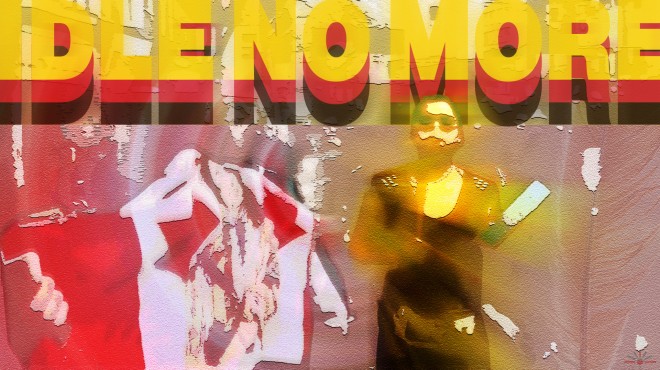
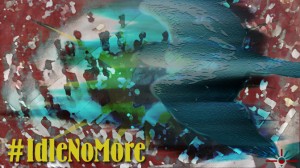
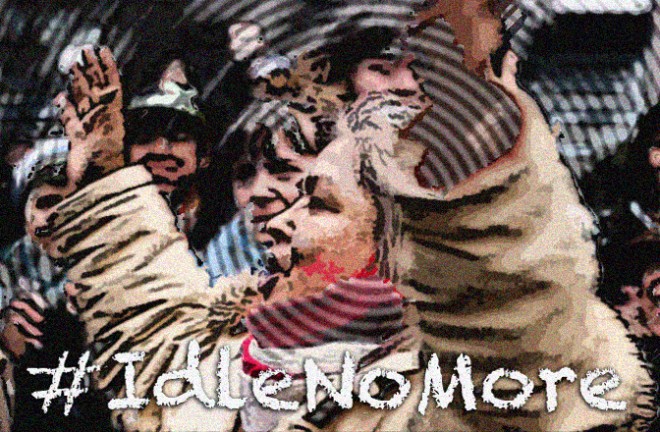
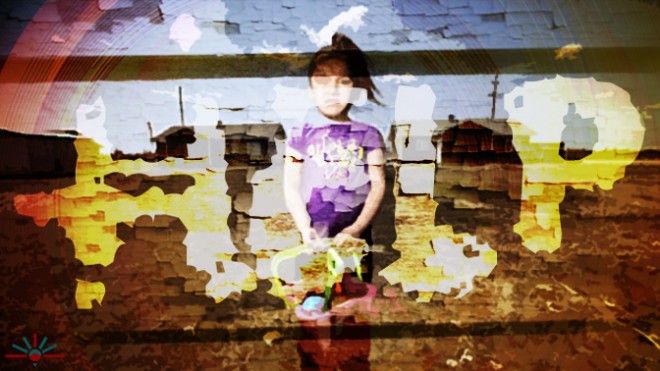
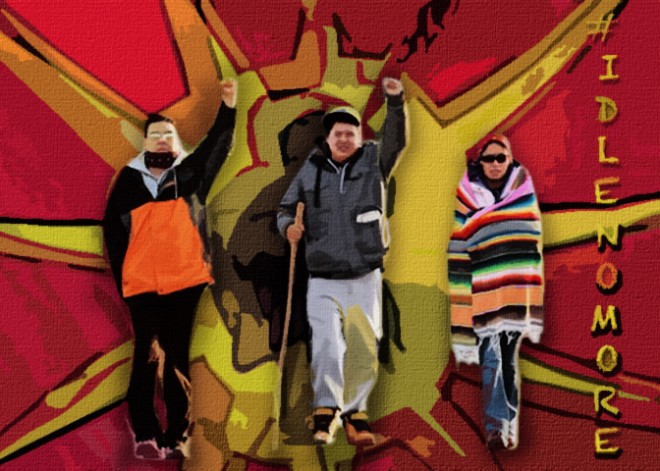
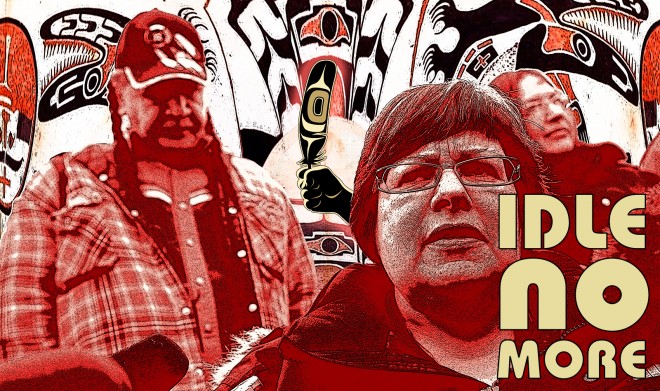

I do consider all the ideas you have presented on your post.
They are really convincing and can definitely work.
Still, the posts are too brief for newbies. May just you please
extend them a little from subsequent time? Thanks for the post.